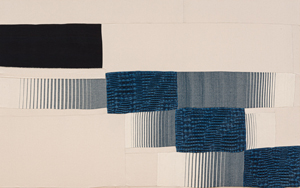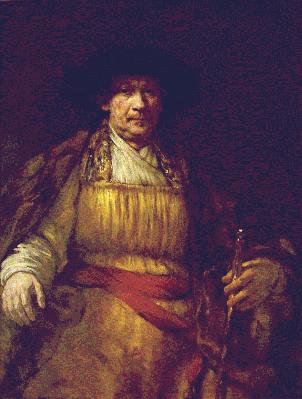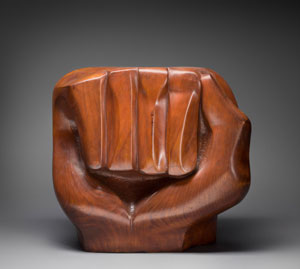6.6.25 — Intelligent Weaving
For a time now, artists have been turning to weaving for the craft of the ancients and the latest thing in painting. An unknown quantity has become all but a formula, a cruel observer might complain, and a tribute to “women’s work” and a diversity of cultures has become just one style among many. You might as well delegate it to AI,  the voice of authority continues, along with everything else.
the voice of authority continues, along with everything else.
Really? I am not convinced, but Jovencio de la Paz already has, and the results could have you rethinking old and new. It might also have you wondering just who these days is delegating what to whom.
Computer models can now turn out a text or an image in the style of anyone you like. Indeed, it has no choice, since a program cannot act without instructions, and there is no telling a machine just to make something great. Who gets to define great? And if the instructions call for something original, can it still claim originality? I argued for a similar “postmodern paradox” in starting this Web site, and it helped me rediscover Modernism and art history. Now AI could be the ultimate postmodern.
de la Paz makes a point of recovering the past, but as a collaboration with an uncertain future, at P.P.O.W. through June 21. This comes to Tribeca from not just any textile maker, but a Jacquard loom—or rather a digital Jacquard loom, if you can imagine that. But then a loom required instructions long ago, and automation had a cost in lives and livelihoods from the first. Yet it could adapt to shifting instructions, too, like those of an artist. It also produced practicality and beauty. It is, says the artist, “El Lugar de los Milagros” (or “The Place of Miracles”).
The show’s title is not just a lie. Up close, threads pop right out of the background. Step back, and the shimmer belongs to something like Op Art, as black verticals come closer to or farther from each other. The artist works in series, including grids and flattened circles, bringing the work that much closer to late Modernism. More often than not, the coarse weave leaves plenty of fabric unused. introduces the equivalent of unpainted canvas. It also breaks the symmetry.
Who, then, broke the symmetry? The artist has a shifting identity even apart from AI. Born in Singapore, de la Paz lives and works in Oregon. If the name sounds Mexican(and peaceable), the show’s title quotes a site in Oaxaca. Oh, and he or she prefers they. I cannot swear that this is LGBT+ art, but it has many loves and many collaborators.
The show overlaps Marina Rheingantz at Bortolami, a Brazilian who produces art of the Americas and a shifting, shimmering weave of paint alone. She works large, laying a fluid background of soft colors before overlays of scattered paint. Helen Frankenthaler, Joan Mitchell, and color-field painting loom over everything. Once again, what was past is new. AI and a loom can compete with this, but who gets to say so? AI may yet take a miracle.
Read more, now in a feature-length article on this site.



